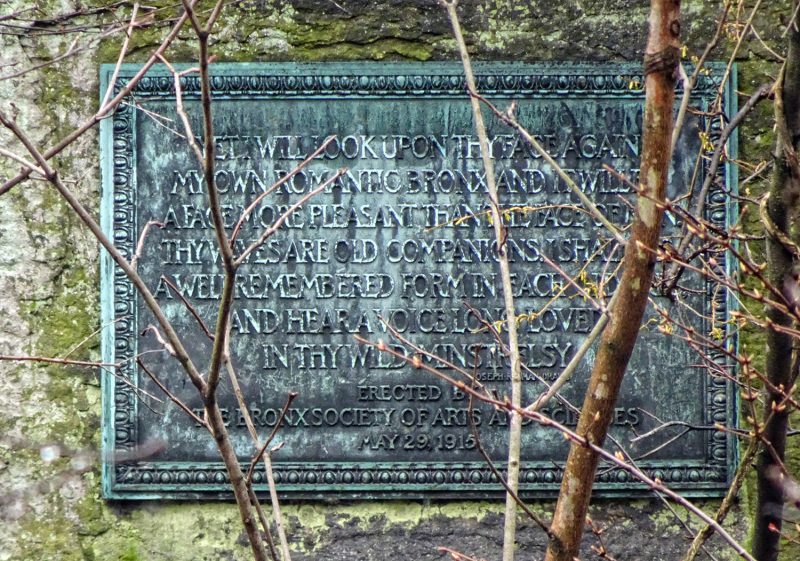Poetry on the River: Joseph Rodman Drake, the Bard of the Bronx
Posted in History on April 5 2018, by Kristine Paulus
Kristine Paulus is the Plant Records Manager of The New York Botanical Garden.

April is National Poetry Month and each year the Garden joins the Academy of American Poets and the Poetry Society of America in celebrating this occasion by hosting a number of events. Visitors can partake in various festivities such as readings and poetry walks punctuated with signs broadcasting plant-inspired poems.
Exceptionally observant visitors might even spy a hidden poetic gem off the Garden’s beaten path (or, as Robert Frost might have put, the road less traveled by). In April and every other month of the year, there awaits a curious plaque along the banks of the Bronx River. Just south of the Stone Mill Bridge, on the east side, a bronze tablet is affixed to a large rock. Those with excellent vision (or a pair of binoculars) might notice that the tablet is inscribed with a poem.
The piece is the last stanza of Bronx, written by Joseph Rodman Drake (1795–1820) in 1818:
Yet I will look upon thy face again,
My own romantic Bronx, and it will be
A face more pleasant than the face of men.
Thy waves are old companions, I shall see
A well-remembered form in each old tree,
And hear a voice long loved in thy wild minstrelsy.
The tablet is not easily visible but can be seen from the opposite side of the river, near the southernmost canoe portage within the Garden. Even with binoculars, the sightline is obscured when trees fully leaf out with summer foliage. It’s best viewed from a canoe or just the right angle from the bridge. This ode to New York’s northernmost borough extols the beauty of the Bronx River. The poem’s speaker beholds, with awe and wonder, the many species of trees growing nearby. He laments having to “leave thy loveliness” for “the dull world of earthly blindness.”
A native Bronxite, Drake died at the young age of 25 but produced a worthy volume of work and became firmly anthologized as a great American writer. In 1915, the City of New York named a park after Drake and on the evening of May 29 that same year (at “5:15 O’Clock,” to be precise), Dr. Nathaniel L. Britton, co-founder and then Director of the New York Botanical Garden, helped dedicate the bronze marker:
“On the bank of the river which inspired his charming poem, the Bronx Society of Arts and Sciences now dedicates one verse in imperishable bronze, as a tribute alike to the poet and to the source of his inspiration.” *
Installed by the Bronx Society of Arts and Sciences, which was formerly housed in the Lorillard Snuff Mill (as the Lillian and Amy Goldman Stone Mill was then known), the marker remains a reminder of the Bronx’s rich literary history and pastoral past. Today, where the Bronx River traverses through The New York Botanical Garden, much of this Arcadian allure endures, making Drake’s poem seem not so far off.


This was LOVELY to read and to know. Please publish more pieces on the history, art, and architecture of our beloved Garden. As a Tour Guide, I appreciate these wonderful pieces that can be incorporated into my talks.